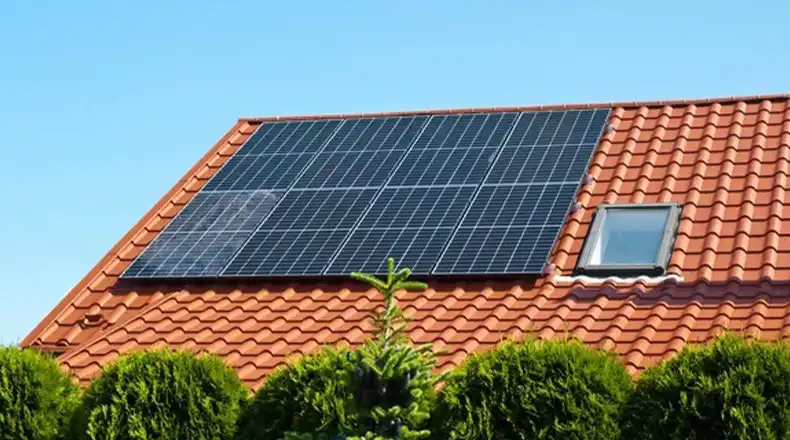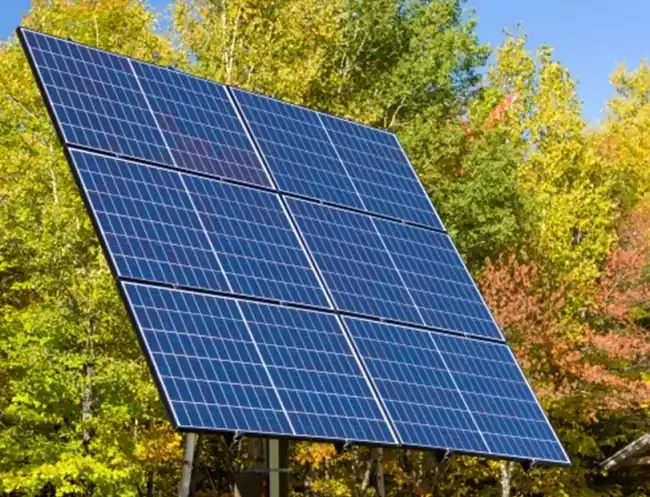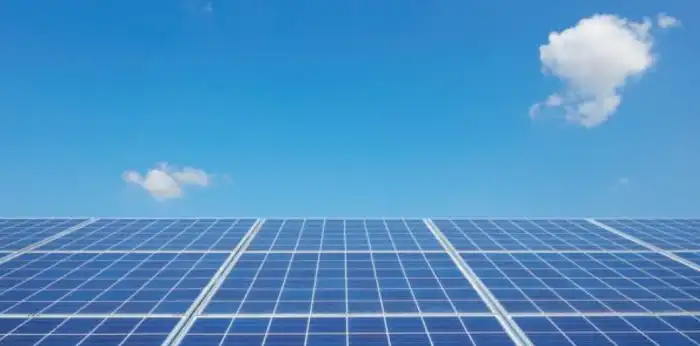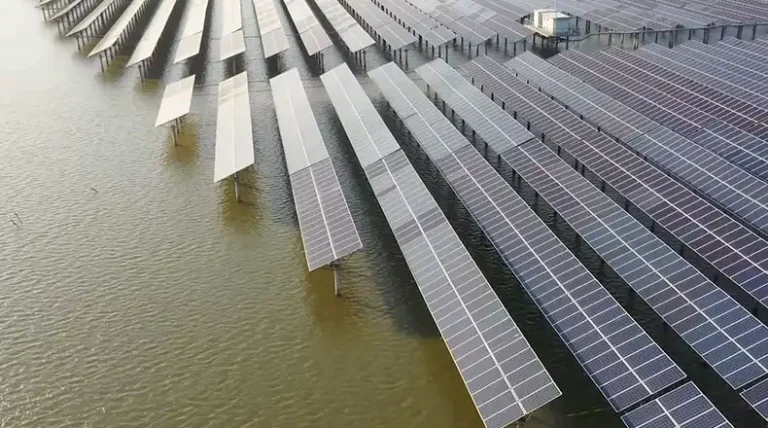Polycrystalline Solar Panels for Residential Use | General Discussion
Polycrystalline solar panels offer a balance of efficiency and affordability in terms of harnessing renewable energy. Developed in the 1980s, they represent a significant advancement in solar technology, providing a more cost-effective alternative to their monocrystalline counterparts.
Today, polycrystalline panels are widely used in residential settings, enabling homeowners to reduce their carbon footprint and energy costs. This article explores the technology, benefits, and considerations of polycrystalline solar panels for residential use, offering insights into their installation, performance, and financial aspects.

An Overview of Polycrystalline Solar Panels
Polycrystalline solar panels, also known as multi-crystalline panels, are photovoltaic devices made from multiple silicon crystals. The manufacturing process involves melting raw silicon and pouring it into a square mold, which is then cooled and cut into wafers. This process results in a distinctive blue, speckled appearance due to the multiple crystal structures.
Materials
- Silicon
- Aluminum frame
- Glass cover
- Ethylene Vinyl Acetate (EVA) encapsulant
- Backsheet (typically made of polyvinyl fluoride)
Polycrystalline solar panels operate based on the photovoltaic effect, converting sunlight into electricity. Here’s a simplified breakdown of the process –
1. Sunlight strikes the silicon cells
2. Photons excite electrons in the silicon
3. Electrons flow through the cell, creating an electric current
4. Inverters convert the DC electricity to AC for home use
The energy conversion efficiency of polycrystalline panels typically ranges from 15% to 17%.
Benefits of Polycrystalline Solar Panels for Residential Use
Choosing polycrystalline solar panels for your home comes with a host of advantages. From cost-effectiveness to environmental benefits, these panels offer compelling reasons for homeowners to make the switch to solar. Their widespread availability and accessibility further enhance their appeal.

Cost-effectiveness
One of the primary advantages of polycrystalline panels is their lower initial cost compared to monocrystalline options. On average, polycrystalline panels are 10-20% cheaper, making them an attractive option for budget-conscious homeowners. The economic benefits over time are –
- Lower electricity bills
- Potential for net metering credits
- Increased home value (typically 4% according to recent studies)
Environmental Impact
By choosing polycrystalline solar panels, homeowners can significantly reduce their carbon footprint. A typical 5kW residential system can offset approximately 12,000 pounds of carbon dioxide annually, equivalent to planting about 100 trees.
The sustainability of materials used in polycrystalline panels is also noteworthy. Silicon, the primary component, is abundant and non-toxic. Many manufacturers also offer recycling programs for end-of-life panels.
Availability and Accessibility
Polycrystalline panels are widely available in the market, with numerous manufacturers producing them. This abundance translates to –
- Competitive pricing
- Easier sourcing and purchasing
- Greater choice in terms of brands and specifications
Durability
Polycrystalline panels are highly durable and require minimal maintenance. They require –
- Annual cleaning
- Periodic inspections (every 3-5 years)
- Inverter replacement (typically once during the panel’s lifetime)
Drawbacks of Polycrystalline Solar Panels for Residential Use
While polycrystalline solar panels offer numerous benefits, it’s important to consider their limitations. From efficiency rates to long-term durability, these panels have certain drawbacks that homeowners should weigh against their advantages.

Lower Efficiency Rates
While polycrystalline panels have improved over the years, they still lag behind monocrystalline panels in terms of efficiency. This means more panels may be needed to produce the same amount of energy. Also, performance can be more affected by high temperatures or low-light conditions.
Lifespan
Polycrystalline panels generally have a lifespan of 25-30 years, slightly shorter than the 30-35 years of monocrystalline panels.
Financial Aspects of Polycrystalline Solar Panels for Residential Use
The financial considerations of adopting polycrystalline solar panels are multifaceted. From initial costs and financing options to long-term savings, understanding the economic landscape is crucial.

Initial Costs and Financing Options
The cost of a polycrystalline solar panel system varies based on size, location, and specific equipment. As of 2024, typical costs range from $2.50 to $3.50 per watt installed. When it comes to financing options, they include –
- Solar loans
- Home equity loans
- Power Purchase Agreements (PPAs)
- Leasing, etc
Long-term Savings and Return on Investment (ROI)
Over time, choosing polycrystalline solar panels can save you a lot of money and provide a good return on your investment. Typically, it takes between 6 to 10 years to recover the initial cost, depending on how much you pay for electricity and how sunny your area is.
For example, a 5kW system in average sunlight conditions could save you anywhere from $20,000 to $40,000 over 25 years. This shows that investing in these panels can be a smart move for homeowners looking to cut down on electricity expenses.
Performance and Energy Output of Polycrystalline Solar Panels for Residential Use
Understanding the performance and energy output of polycrystalline solar panels is key to maximizing your investment.
A standard 5kW polycrystalline solar panel system typically generates between 6,000 to 8,000 kWh of electricity each year. The amount produced can vary based on where you live and how the panels are set up.
Many modern solar setups include monitoring systems like SolarEdge, Enphase Enlighten, and SMA Sunny Portal. These tools let homeowners see how much energy their panels are making in real time and help optimize their performance.
End Note
Polycrystalline solar panels offer a cost-effective and environmentally friendly solution for homeowners looking to embrace renewable energy. While they may have slightly lower efficiency compared to monocrystalline panels, their affordability and widespread availability make them an attractive option for many residential installations. As technology continues to improve and costs decrease, polycrystalline panels are likely to remain a popular choice in the residential solar market.
Frequently Asked Questions
Can polycrystalline solar panels work effectively in colder climates?
Yes, polycrystalline panels can work effectively in colder climates. They often perform better in cooler temperatures as heat can reduce solar panel efficiency. However, snow accumulation can temporarily reduce output, so regular clearing may be necessary in snowy regions.
How do polycrystalline panels perform during cloudy days compared to monocrystalline panels?
Both polycrystalline and monocrystalline panels can generate electricity on cloudy days, albeit at reduced efficiency. Monocrystalline panels generally perform slightly better in low-light conditions due to their higher overall efficiency. However, the difference is often minimal, and polycrystalline panels remain a cost-effective choice for many climates.
How do polycrystalline solar panels impact home resale value?
Polycrystalline solar panels typically increase home resale value. Studies show that homes with solar installations sell for 4.1% more on average than comparable non-solar homes. The exact impact depends on factors like system size, local energy costs, and market demand for eco-friendly features. While slightly less efficient than monocrystalline panels, polycrystalline systems still significantly boost a home’s appeal and value to potential buyers.






